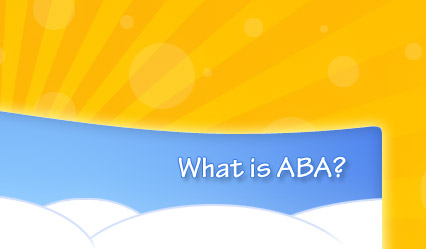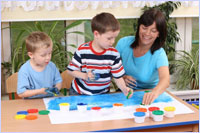



ABA is a field of psychology that focuses on applying learning theories to improve socially significant behavior and bring about positive change. One specific application of these techniques is intensive behavioural intervention for children with autism. Teaching techniques based on ABA have been shown to significantly improve the abilities of children with autism and other developmental delays to learn and develop.
The techniques of ABA are grounded in science. Some of the hallmarks of ABA include:
| Breaking complex tasks into smaller tasks that can be taught more easily |
| Providing repeated opportunities to learn and master new skills |
| Using reinforcement procedures to assist in the acquisition of new skills |
| Understanding the functions of behaviours (e.g. communication, attention seeking, avoidance, etc.) and developing programs to meet the child’s needs |
| Making objective, data driven decisions to guide our evaluations of treatment progress |
| Utilizing effective teaching techniques, such as discrete trial teaching (DTT) |
Effectiveness of ABA
Applied Behaviour Analysis (ABA) is based upon more than 50 years of scientific investigation with individuals affected by a wide range of behavioural and developmental disorders. Research has shown ABA to be effective in reducing disruptive behaviours such as self-injury, tantrums, non-compliance, and self-stimulation. ABA has also been shown to be effective in teaching commonly deficient skills such as complex communication, social, play and self-help skills. Two seminal studies by Lovaas (1987), and McEachin, Smith and Lovaas (1993), have proven the efficacy of ABA. Many studies have also been undertaken since this time which replicate these findings and provide additional support for the techniques.
ABA & Contemporary Behaviour Therapy
BTLC’s approach to ABA treatment of autism differs in many fundamental ways from the more rigid application of ABA. Therefore, to distinguish our approach we identify it as Contemporary Behavior Therapy (CBT).
Some of the hallmarks of CBT include:
| Utilization of all the guiding principles of ABA with the benefit of the clever innovations of thousands of individuals over the years |
| Emphasis on a positive and systematic approach to teaching functional skills and reducing behaviour problems |
| Therapy is a creative process and is implemented with structured flexibility, capitalizing on the resources available for each individual child |
| While we have found certain teaching techniques to be consistently effective, we also recognize that each person working with a child has their own style and unique contribution to make to the educational treatment process |
| Our general approach is very pragmatic: if it works, stick with it; if it does not work, figure out how to fix it! |
What is Discrete Trial Teaching (DTT)?
DTT is a teaching process used to develop most skills, including behavioural, cognitive, communication, play, social, motor development, self-help, and adaptive skills. It is strategy that can be used for all ages and populations and not just for teaching children with autism. Good DTT does not require that a child be sitting at a table or using flashcards and does not involve aversive procedures of any kind. The process takes into account the child’s developmental level and can be very natural and child and family friendly.
The technique involves:
| breaking a skill into smaller parts |
| teaching one sub-skill at a time until mastery |
| allowing repeated practice in a concentrated period of time |
| providing prompting and prompt fading as necessary |
| utilizing reinforcement procedures |
A teaching session involves numerous trials, with each trial having a distinct beginning and end, hence the name "discrete". Each part of the skill is mastered before more information is presented. In DTT, a very small unit of information is presented and the child's response is immediately sought. This contrasts with continuous trial or more traditional teaching methods, which present large amounts of information with no clearly defined target response on the child's part.
Other techniques used in treatment may include behaviour management, crisis intervention, structured teaching interactions and more traditional counseling.












